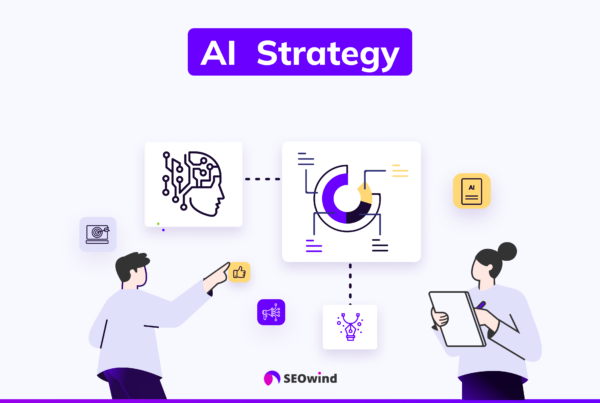Navigating the digital landscape can be intimidating, especially without a solid game plan. That’s why today, we’re tackling a critical aspect of content marketing that needs to be addressed: editorial strategy. Whether you’re an established corporate or an up-and-coming start-up, a thoughtfully designed editorial strategy can propel your content to new heights, build brand awareness and help you connect with your target audience in powerful ways.
What is an Editorial Strategy?
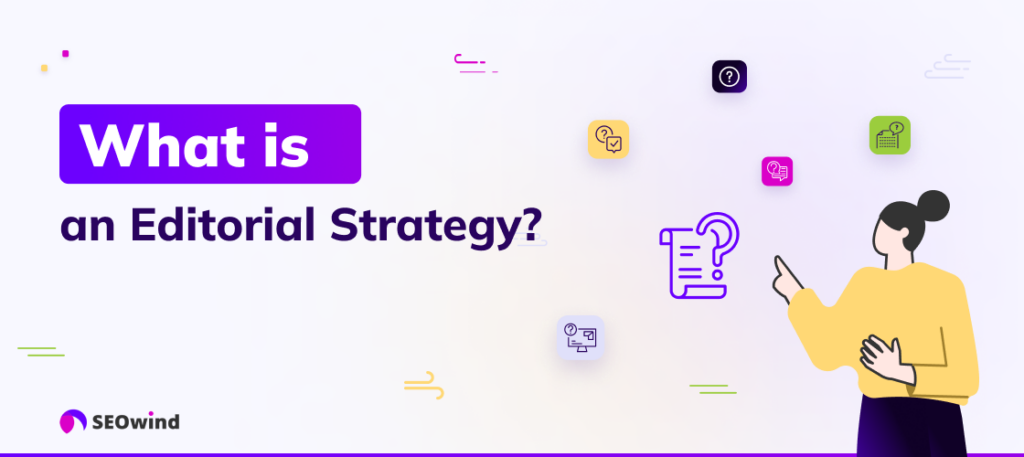
At its core, editorial strategy is a blueprint for your content – guiding what content you produce, why you create content, how you distribute it, and who it’s catered to. More than just an abstraction or fancy buzzword, an editorial strategy provides tangible value by saving time and resources while maximizing output efficiency. It embraces aspects such as setting content marketing goals and campaign aims, choosing optimal types of content, selecting distribution channels, and maintaining publishing cadence, alongside developing workflows.
Shaping compelling content involves prudent planning—enter the world of editorial strategies. These are not merely plans conveying what to write about, but they encapsulate your company’s vision, concentrate on topics of relevance to target audiences, and determine how best to present them. Furthermore, they dictate where such captivating material should be published across varied media platforms. Effective editorial strategies ultimately hinge on one pivotal fact: precision-targeted messages reaching the right audience at opportune moments ensure profound impact.
The focus of an editorial strategy plays a significant role in shaping your content’s direction, aligning it powerfully with your business objectives. It should ideally encapsulate your content marketing goals, audience attributes, and the narrative you wish to communicate.
Your editorial strategy primarily revolves around three critical components –
- Content Goals: These are derived from your broader organizational aims. For instance, if improving brand awareness is one of your primary objectives, then ensuring high visibility and virality might be key goals for your content.
- Audience Insights: Understanding who constitutes your audience underpins successful editorial strategies. Demographics, psychographics, browsing habits, and preferences must guide the tone, tenor, and type of content you produce.
- Storytelling Methodologies: Every brand has a compelling story to share, something unique that makes it stand out from competitors. Your editorial strategy should consistently incorporate elements of this narrative or philosophy across all content pieces.
In essence, the focus of successful editorial strategy planning involves understanding what message you want to deliver (content goals), who you desire to reach (audience insights), and how you choose to convey it (storytelling methodologies). All these factors intertwine seamlessly within an effective editorial strategy framework.
Remember to foster flexibility in this strategic approach as well; environmental dynamics always call for recalibrating tactics periodically. Research-backed adaptability helps you continue delivering relevant content that resonates with evolving consumer needs and preferences while staying true to core brand values.
Now that we understand where the spotlight shines brightly within an editorial strategy, let’s delve deeper into its benefits next. With clarity surmounting confusion at this juncture in our exploration together, optimally leveraging such strategy mapping can elevate content marketing outcomes noticeably!
Benefits of Having a Documented Editorial Strategy
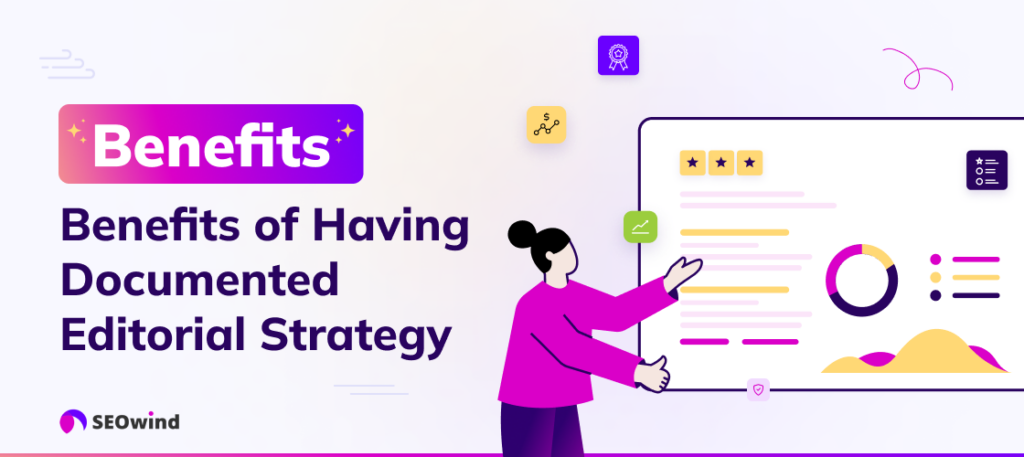
Modern business practices are conducted with a strategy. It grounds our marketing efforts, keeping them focused and driving us closer to our business goals. An editorial strategy is no different. It guides your content production, ensuring coherence in brand messaging and catering to your target audience. How else does it benefit you? Let’s delve deeper.
Clarity and Consistency
An effective editorial strategy acts as a lighthouse amidst the foggy sea of proliferate content—it provides guidance. You will know what topics to produce, when, and how often to publish them so that you cater to your demographic optimally. Furthermore, with established guidelines for tone and style, maintaining a coherent brand voice across all platforms becomes less arduous.
Improved SEO Rankings
Investing time into planning an editorial strategy pays dividends in improving keyword targeting—boosting SEO rankings. By identifying relevant keywords within your niche early on, you can craft and publish content strategically around those terms assuring higher visibility on search engines.
Enhanced Audience Engagement
Defining the targets of your editorial content team at the outset enables precise tailoring of articles towards their interests – a surefire way of boosting engagement levels. Customer satisfaction should never be underestimated. It earns loyalty and encourages social sharing, and amplifies reach further.
Cost-Effective Marketing
One understated advantage is cost-effectiveness. A thorough editorial strategy helps eliminate wastage by producing irrelevant or redundant content. A common mistake where haphazard production reigns over strategic planning.
Measurable Goals & Achievements
Lastly, an insightful feature of having this written plan in place means being able to set measurable goals – such as desired click-through rates or specified rise in web traffic—and monitor growth accurately against these markers, enhancing ROI determination.
Adopting an editorial strategy elevates the potential of your brand’s storytelling prowess while allowing accurate measurement of progress against goals – efficiently directing resources away from ineffectual avenues toward successful strategy.
How to Create an Effective Editorial Strategy
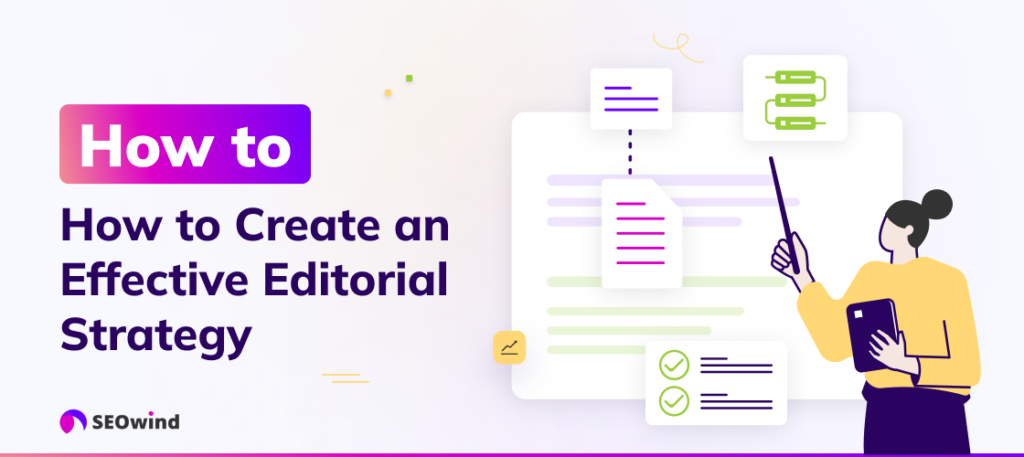
Creating an effective editorial strategy is a process that takes time and effort. Instead, it requires clear and consistent steps to provide structure and direction for content marketers.
Step 1: Identify Your Target Audience
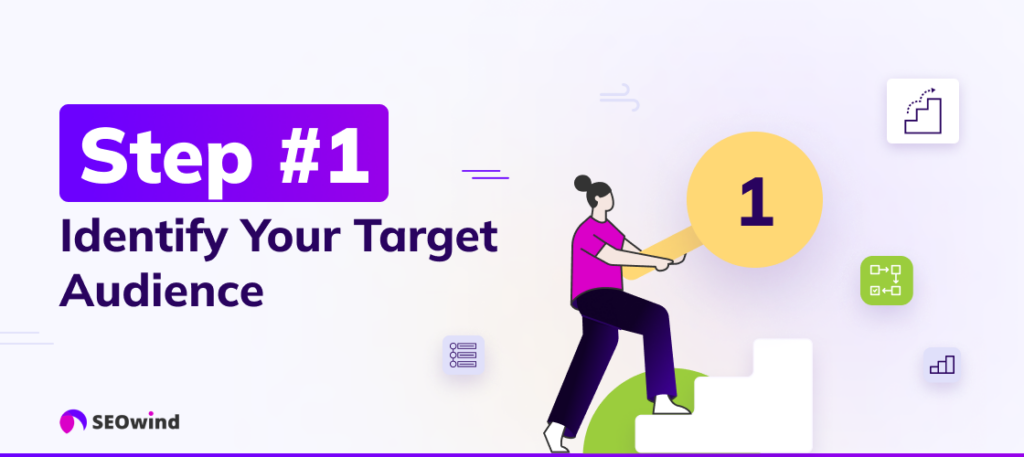
Before you dip your toes into editorial strategies, the first step is to pinpoint who you are writing for. The cornerstone of strategic editorial planning is a well-defined buyer persona. A detailed image of your ideal customer or reader fuels the engine that propels vibrant, tailor-made content.
- Demographic Information: Gather basic demographic data such as age, gender, geographical location, and income bracket. All these factors will influence their preferences and interests.
- Psychographics: Dig deeper by exploring your audience’s hobbies, motivations, fears, and desires – also known as psychographics. Accurately defining this segment lays down solid bricks on which engaging editorial marketing can be built.
- Needs and Pain Points: Understanding what problems they face or the needs they seek to fulfill shapes up creating transformative content that resonates with them.
- Content Consumption Habits: Finally, figure out how, when, and where they consume information to personalize your reach effectively.
Delve deep into consumer behavior dives using market research tools or social listening techniques. This sometimes daunting task could be sweetened with direct interactions – surveys or interviews through thoughtful conversations can accelerate crystal-clear understandings.
Remember, it’s not just about collecting data but analyzing it to cultivate a vivid portrait of each individual within your target audience – their lifestyle choices, habits, challenges, and aspirations fill up an implicit map directing your editorial content strategy.
Knowing your targets enhances message relevance, leading to positive user experiences driving higher engagement rates and customer loyalty, and boosting overall Return on Investment (ROI). Dictating everything from topic selection to tone usage in shaping decisions around appropriate content types & channels serves the big picture – constructing an effective bulletproof Editorial Strategy!
Step 2: Establish Editorial Guidelines
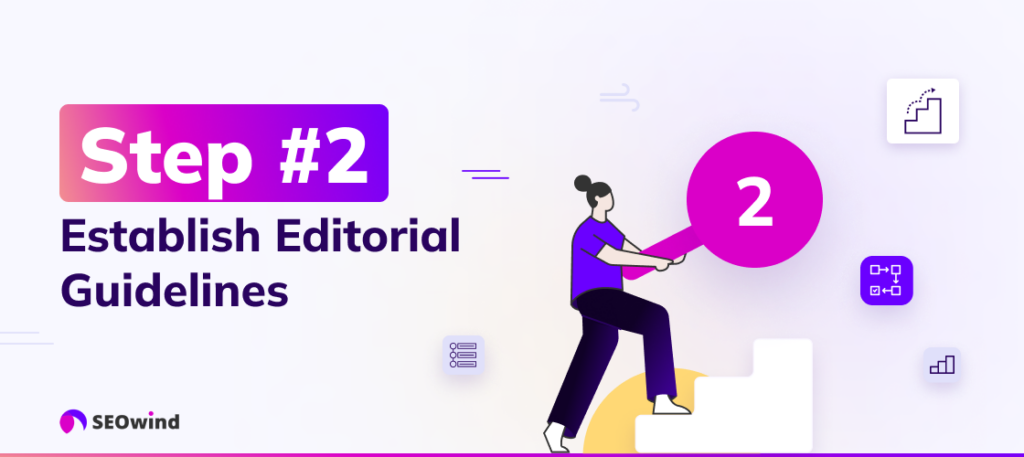
Once you know who you’re writing for, establishing editorial guidelines comes next. These aren’t necessarily hard-and-fast rules but act as boundaries within which creativity can flow freely without losing sight of coherence and consistency.
Include elements like:
- The tone of voice (formal/informal)
- Stylistic preferences (active/passive voice)
- Grammar preferences (usage of Oxford comma)
These predefined standards maintain uniformity across all published content formats.
Step 3: Draft a Simple Style Guide
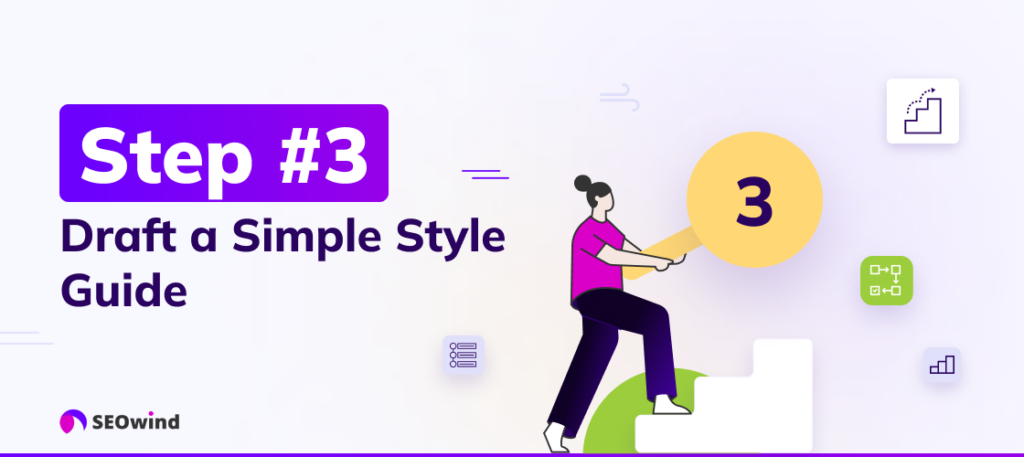
In this phase, articulate specifics that dictate the brand voice and messaging into a straightforward document known as a style guide.
Here is where details like preferred spellings (i.e., “color” vs. “color”) and the use of industry jargon or acronyms come into play. A well-crafted style guide minimizes inconsistencies in written text, thus maintaining the credibility of your publications.
Step 4: Choose Content Types
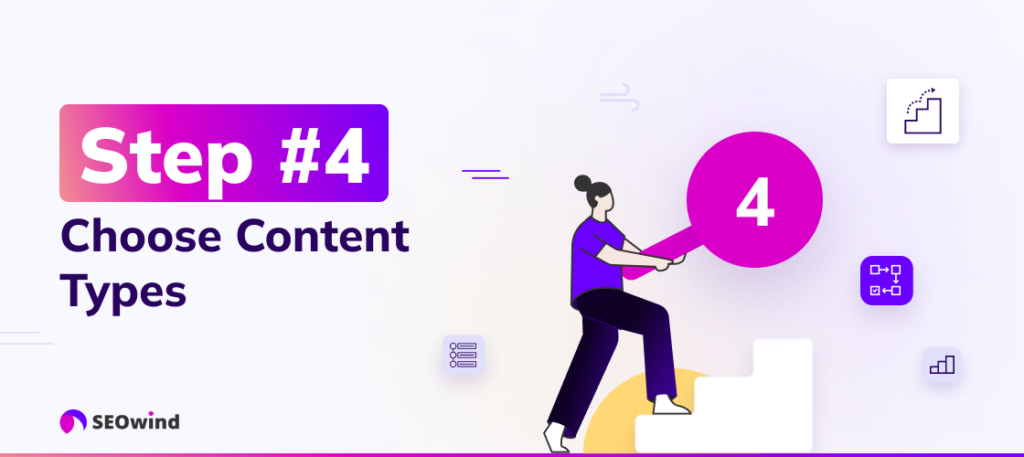
Determining suitable content types contributes significantly towards pushing forward one’s objectives in mind quicker. This includes various content formats such as blog posts, videos, infographics, or podcasts, each having a unique impact on audience engagement.
Remember:
- Think about repurposing: Certain pieces offer great mileage across multiple formats.
- What type works best with your audience?
Choosing judiciously based on these factors will enhance the effectiveness of your editorial strategy.
Step 5: Choose Content Channels
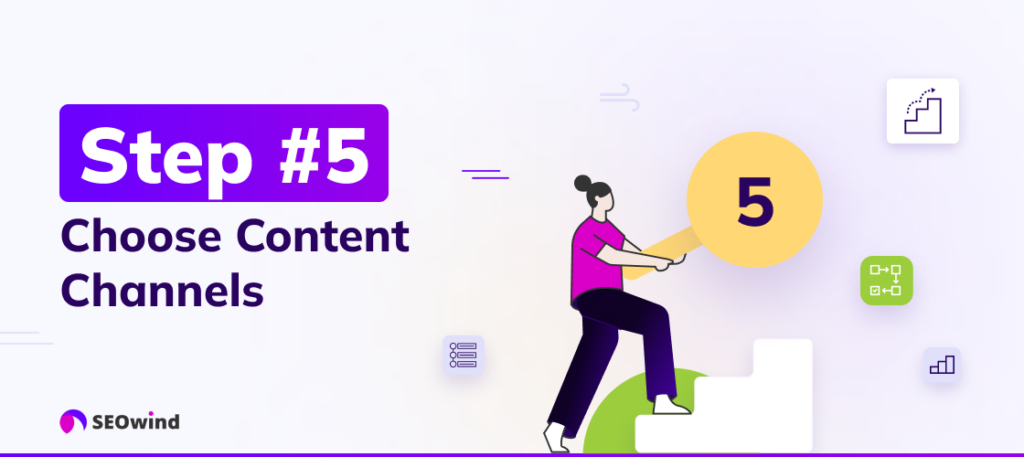
Different platforms engage audiences differently — selecting apt channels is pivotal in maximizing reach and engagement. Hence think about where your target audience and demographics prefer spending time online before making choices.
Running small-scale experiments between Facebook vs. Instagram posts or Medium vs. LinkedIn articles could prove beneficial to make informed decisions.
Step 6: Set Content Marketing and Campaign Goals
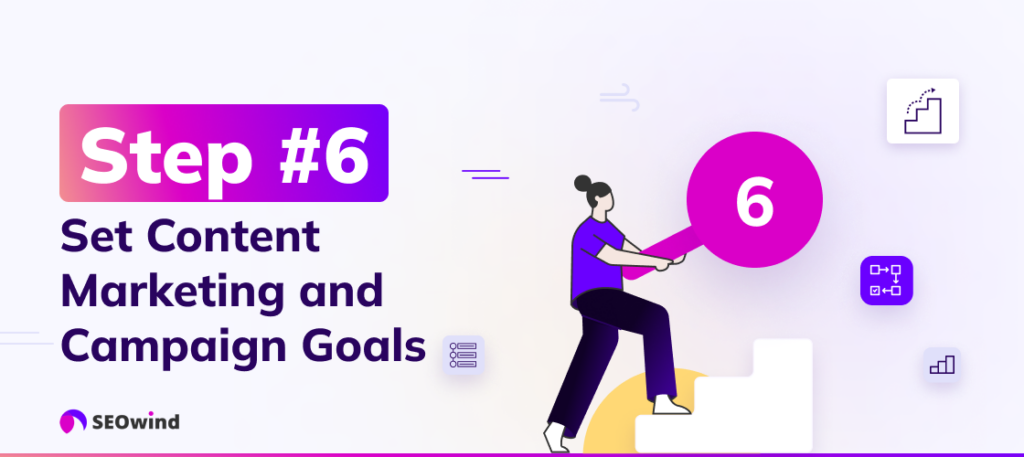
Set realistic yet challenging content marketing goals for individual pieces and campaigns using SMART criteria – Specific, Measurable, Attainable, Relevant, Time-bound).
Consider aspects such as:
- Increasing website traffic by X%.
- Boost social media following by X%.
- Improve email newsletter click-through rates by X%.
Ensure that every content you choose aligns with your objectives and desired outcomes. Whether you are focused on boosting engagement rates, driving organic traffic, educating potential customers about your products or services, lead generation or establishing yourself as a thought leader within your industry – each objective will require specific types of content.
Now let’s delve into some guiding factors while selecting appropriate content:
- Utility: Your chosen content should provide substantial utility or value to your audience.
- Engagement: Prioritize engaging posts that elicit comments and shares, such as listicles, how-to guides, opinion pieces, or FAQs.
- Relevance: Ideally, your selection should be closely related to current trends within your targeted niche.
- Appeal: Visual appeal can significantly increase comprehension rates; hence incorporate images, gifs, or video clips where applicable.
As an extension to this idea, also consider tailoring each piece towards different stages of your buyer’s journey: the discovery phase (general knowledge), consideration phase (comparisons), and decision phase (product specifics).
Last but importantly – experimentation! Don’t shy away from trailblazing beyond the common paths treaded by traditional editorial strategies. Keep experimenting until you find what works best for you and continuously adapt based on results metrics.
The takeaway message? Meticulous selection powered by careful consideration kickstarts the journey toward constructing an indomitable editorial strategy! So buckle up and start strategizing today!
In delving into the rich world of content marketing, it’s intriguing to note a multifaceted set of processes. While these diverse procedures are integrated and overlapped in many regards, each plays a crucial role in sculpting an overarching editorial and content marketing strategy together.
Step 7: Set a Publishing Cadence with Editorial Calendar
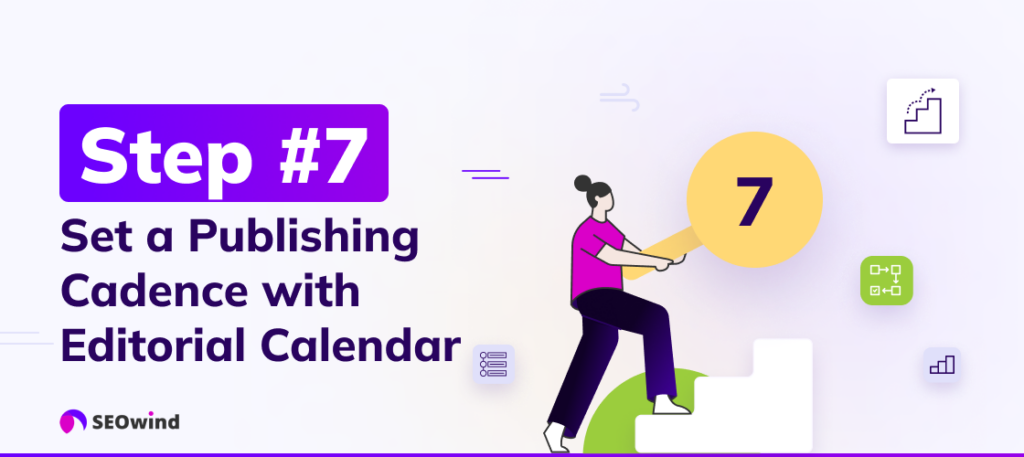
Don’t bombard followers with numerous posts at once; instead, set an achievable cadence catering equally to quality content & quantity requirements.
Producing regularly scheduled high-quality content helps establish trust amongst readers, besides ensuring indexing by search engines, thereby boosting SEO efforts.
Step 8: Develop Workflows for Each Type of Content

Efficient workflows simplify processes, greatly increasing person-hour productivity among team members, especially for repetitive tasks. Documenting all process steps involved while generating blog posts from idea initiation to the final publication stage proves particularly resourceful in preventing costly errors.
Addressing Search Intent: Fine-Tuning Your Editorial Plan
It takes more than wit and words to win hearts in online content; understanding search intent is crucial. By aligning our editorial plan with what our audience hungrily searches for online, it becomes far more accessible to capture and maintain their interest.
Using Data Insights to Align with Audience Searches
A successful editorial strategy begins by delving into data analytics—discovering what content makes your readers tick. Analyzing user queries or using keyword research tools gives us unparalleled insights into the questions our audience seeks answers for.
But here’s where we turn data into gold:
- Identify Patterns: Spot common inquiries within your niche.
- Understand Urgency: Prioritize topics based on search frequency.
- Recognize Language: Mirror phrasing used by searchers for familiarity.
- Scope out Trends: Stay ahead by noting emerging conversation threads.
Bridging the gap between raw data and meaningful application is no small thing. Yet when achieved, it positions us squarely in front of readers precisely when they need us most – with exactly what they want.
Strategic Topic Selection to Maximize Relevance
Just as every master painter knows which hues will stir souls on canvas, we must choose our topic palette intuitively yet intentionally within our editorial plan. This selection goes beyond mere intuition. It requires strategic thinking aligned perfectly with brand goals and audience interests.
We forge relevance through careful consideration:
- Audience Pain Points: Addressing actual problems fosters invaluable connections.
- Competitive Gaps: Filling holes left by competitors places us at an advantage.
- Evergreen Potentials: Investing in timeless topics ensures long-term dividends.
- Innovation Activators: Topics forecasting future trends validate leadership standing.
Striving for topical authority means emphasizing quality over quantity – not every subject needs coverage, only those holding true significance for our community.
Targeting Keywords: Optimizing Your Content Marketing

Crafting a robust editorial strategy is more than just penning engaging stories or picking the right channels and media to exhibit them. As a seasoned content professional, I assure you that an essential aspect of this process involves SEO strategy, optimizing your content marketing using targeted keywords.
Why is Keyword Optimization Important?
There are multiple reasons why keyword optimization holds such significance within an editorial strategy:
- Visibility: The strategically incorporated right keywords amplify your content’s visibility on search engines, aiding in attracting your target audience.
- Traffic Growth: Increased visibility translates into higher site traffic— another definite plus for any business looking to extend its online footprint.
- Improved Rankings: Exceptionally optimized content has better chances of climbing up search engine rankings, strengthening your brand’s online authority.
The science behind keyword targeting isn’t as arcane as it appears. Let me share my insights and methods to simplify this complex subject.
Unearthing Relevant Keywords
Keyword research provides the foundation for securing precious SERP (Search Engine Results Page) real estate. It means finding prevalent words and phrases related to your brand offerings that users frequently type into search engines.
Several handy tools like Google Keyword Planner or Semrush assist in spotting popular keywords relevant to your niche or industry. The trick is not just identifying these terms but understanding where and how best to use them — without meaninglessly stuffing them anywhere feasible! Speaking from experience, moderation is crucial in keyword utilization too.
The Long-Tail Approach
Long-tail keywords encompass three or more words specific to your products/services, e.g., instead of “coffee,” try “hand-roasted Brazilian coffee.” Although they attract less traffic than shorter terms, they often convert better because they’re more explicit. They improve the odds of reaching potential customers further along their buying journey who are likelier to make a purchase.
Connecting with these readers through highly focused content signals relevancy—the heart of successful SEO practices—to major search algorithms!
Establish Context with LSI Keywords
LSI (Latent Semantic Indexing) keywords involve semantically linked phrases resembling main keywords within a text body. For instance, for “mobile phones,” LSI examples include “smartphone apps” and “battery life.”
Adding LSI variants helps portray context around primary objectives—in our case, enhancing relevancy and informing search engine crawlers about what the page entails. Carefully selected LSIs can help bolster comprehension rates for human visitors and AI web crawlers.
Mastering keyword integration requires practice, attention to detail, and continual updates per evolving market trends—an indispensable part of refining any sound editorial strategy! This duality makes the craft compelling; there’s never a dull moment while pursuing optimized content creation—one reason I cherish being part of this dynamic industry!
In our quest for a robust editorial strategy, choosing the right content surfaces as a linchpin. This step plays a pivotal role in ensuring that you’re connecting with your audience effectively. It can certainly be the make-or-break element of any successful editorial endeavor.
Firstly, always remember that quality trumps quantity in content production. There’s no purpose in creating heaps of low-grade material. The key principle here is to present engaging and informative value propositions to your readers through well-researched and meticulously curated articles, podcasts, videos, or infographics.
How to create content aligned with the Editorial Calendar
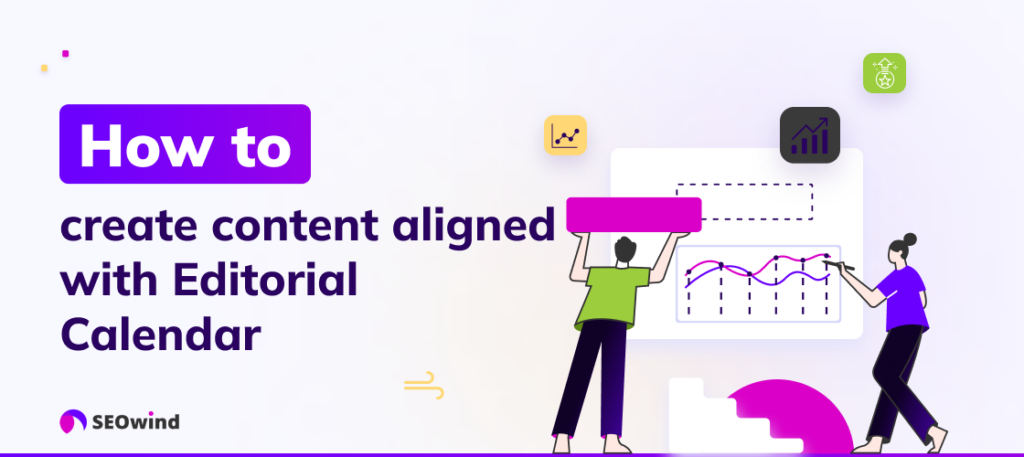
Idea Generation
The genesis of every successful content marketing process for your editorial planning lies with idea generation. It’s about harnessing creativity to identify topics that resonate with your target audience while aligning them with your broader business goals. Tools such as Brainstorming sessions, surveys, and customer feedback are often leveraged at this stage.
Content Creation
Post the ideation phase, we transition into creating relevant and engaging content. This involves sketching outlines, writing drafts (incorporating keywords like ‘editorial strategy’ or ‘editorial strategies’), adding visuals where appropriate, and refining until you reach the desired quality standard. Acclaimed editorial examples can guide this endeavor.
Review and Edit
Meticulous editing comes next in ensuring what you pen down is exceptional in quality and relevance. It’s not just about spotting grammatical errors but also improving readability, streamlining structure, and strengthening arguments.
Publish and Distribute
Following the review process – your final bout against any lurking inadequacies – your polished piece is ready for publication. However, simply publishing and pushing content live isn’t enough. A strategic distribution plan forms an integral part of any solid editorial strategy. You want to ensure your meticulously crafted content reaches its intended audience through optimized channels.
Subsequently, employing various marketing channels and tools such as social media platforms, email marketing, and newsletters could vastly enhance visibility.
Understanding these key processes is pivotal to developing robust editorial guidelines for fruitful content marketing campaigns. Even though each step contributes significantly on its own accord, they interchangeably intertwine to propel your overall editorial strategy forward.
Creating a comprehensive editorial strategy requires a plethora of resources. As such, one essential decision you must make is whether to utilize internal or external resources – or even both.
Internal Resources
Firstly, let’s discuss using internal resources for your editorial strategy. This allows your organization full control over all aspects of the creative process. Furthermore, utilizing internal resources can ensure brand consistency across all content generated since your content team intimately understands your company’s vision and tone.
- Staff: Your employees are already familiar with the company culture and objectives. Hence, they would be in an excellent position to create content that aligns seamlessly with these elements.
- Equipment and Technology: The right tools are crucial for effective content creation. Therefore, an investment in cutting-edge editorial tools might prove vital.
However, relying solely on internal resources may lead to operational limitations as it might only allow for a little flexibility in scaling up marketing efforts when needed.
External Resources
Next comes the usage of external resources such as freelancers or agency services that specialize in producing specific types of content.
- Professional Services Outsourcing certain tasks could help speed up production times and increase productivity. Availing professional services also adds diversity allowing different viewpoints to enhance the richness of your content.
- Specialized Tools Using specialized online tools like plagiarism checkers, SEO optimization software, or grammar checks can improve quality assurance while ensuring unique and well-written content.
Nonetheless, keep in mind that using external sources may result in potential inconsistencies with your brand’s voice if not managed carefully.
Therefore, in determining how best to allocate these resources for optimum efficiency within your editorial strategy context, ascertain first which areas warrant more attention based on their complexity or relevance to your goals before making decisions. It’s essential always to balance leveraging both internal and external resources efficiently.
Integrating Operations for Seamless Editorial Execution
Integrating various components of content creation is akin to conducting an orchestra; each member must play in harmony to create a symphony. Likewise, the cornerstone of an influential editorial strategy is ensuring every cog in the machine operates smoothly together. This integration means harmonizing your team’s efforts, so they collectively drive towards reaching your content goals.
Creation of Detailed Content Briefs for Every Piece
Picture this: a bunch of skilled artisans working without a blueprint. Their separate efforts will likely result in a cohesive masterpiece. That’s precisely why detailed content briefs are crucial – they serve as blueprints for your creative ensemble.
- Establish clear objectives: What is the goal of this piece? Define whether it’s to inform, persuade, or entertain.
- Outline the audience and search intent: Who are you addressing, and what answers are they seeking?
- Provide style guidelines: Ensure uniform voice and tone across all pieces by setting precise stylistic preferences.
- Detail SEO elements: Seamlessly integrate keywords like ‘editorial strategy’ and provide metadata specifications.
- Specify content outline and structural components: Map out each segment from headings to call-to-action prompts.
By rigorously crafting these briefs for every single piece of content, you create a stable foundation upon which writers can construct with confidence and clarity – ensuring that each creation aligns perfectly with your overarching vision.
Adapting to Data Insights for Better Content Performance
Pivoting based on feedback isn’t just wise; it’s essential. Imagine steering a ship: neglecting the compass readings could mean ending up off course. Similarly, adapting editorial choices in response to data insights ensures your content remains on target with its intended audience.
To effectively leverage these insights:
- Regularly analyze performance metrics such as page views, engagement rates, and conversion statistics.
- Solicit qualitative feedback directly from readers whenever possible.
- Test different formats or angles for topics that resonate based on prior successes or gaps spotted within your niche market.
When adjustments indicate better resonance with readers or uncover fresh opportunities, don’t hesitate to iterate iteratively – calibrating one element at a time rather than revamping whole articles en masse.
In essence, let data guide you but not dictate your entire course. Creativity must still have its place at the helm alongside analytical precision.
Measure the Impact of Your Editorial Strategy: Return on Investment
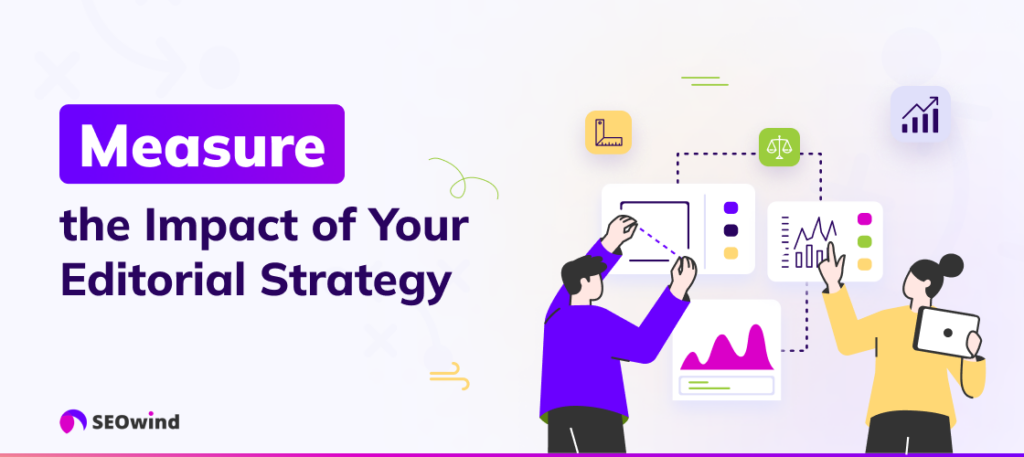
Return on investment (ROI) is a crucial factor in evaluating the success of your editorial content marketing strategy. To justify the resources invested, there need to be tangible beneficial outputs. You need to measure and increase the performance of your editorial content strategy over time.
Key Performance Indicators (KPIs)
To monitor ROI effectively, first, you must specify relevant key performance indicators (KPIs). KPIs are objective measures used to evaluate progress toward desired goals. These could include:
- The number of unique visitors
- Average time spent on site
- Bounce rate
- Newsletter sign-ups
- Social shares Before setting KPIs for your editorial planning, take some time to think about what success looks like for you.
Monitoring Tools
The next step? Utilizing appropriate monitoring tools will aid in tracking these KPIs. Google Analytics, Semrush, and similar platforms can provide substantial insights into your editorial strategy’s performance.
Regular Analysis
Perform regular analysis and adjust your editorial strategies accordingly. Check if some types of content perform better than others or if certain topics evoke more engagement. Drawing insights from this data allows for constantly refining and perfecting your content strategy.
Remember that patience is required when attempting to note substantial improvement in ROI – it takes considerable time and consistent effort before concrete results emerge. Nonetheless, with the rigorous application of said methods, I am confident you’ll gradually see an improved ROI on your well-devised editorial plan.
In essence, measuring the impact of an editorial strategy isn’t about obsessively monitoring every fluctuation in numbers but strategically observing trends over time to make data-informed decisions moving forward. Every campaign has room for optimization if one knows where & how to look!
Keep an eye on those figures! They tell a story about how effectively your message resonates with your target audience – a tale too important to overlook!
Common Questions on Editorial Content Strategy

Given the breadth and depth of this topic, it’s natural to have several queries regarding editorial strategy. Here are some common questions I’ve come across.
What should be included in an editorial strategy?
Myriad factors contribute to a comprehensive editorial strategy. Let me elucidate:
- Content Identification: Determine what type of content would resonate with your audience – blogs, articles, whitepapers, videos, or podcasts.
- Audience Segmentation: Identify who you’re writing for. Create audience personas making them as detailed as possible.
- Editorial Guidelines: Establish a set of rules for tone, language use, formatting, citation policy, and grammatical style.
- Keyword Optimization: Ensure all content is SEO-friendly and utilizes targeted keywords effectively.
- Consistent Editorial Calendar: Maintain a regular publishing cadence with your readership for predictability and expectation setting.
- Metrics Tracking: Track key performance indicators (KPIs) to measure the effectiveness of your content and inform future strategic decisions.
Incorporating these elements into your planning process allows you to formulate an overarching editorial strategy that delivers measurable benefits.
Editorial Strategy vs Content Strategy: What’s the difference?
At first glance, “editorial strategy” and “content strategy” might seem synonymous. However, both concepts have a subtle distinction.
An ‘editorial strategy,’ broadly speaking, concentrates on producing engaging content that aligns with overall organizational goals such as brand positioning or thought leadership. It assists in dictating the tone-of-voice and stylistic choices inherent in your content creation effort.
On the other hand, ‘content strategy’ is more concerned with managing all tangible media an organization owns – from written pieces to visual assets like infographics or videos. It involves handling creation, delivery, and governance aspects, including auditing existing content or controlling distribution channels.
Remember: while both strategies often overlap in certain areas – they serve different purposes within an enterprise’s wider marketing schema.
Editorial Calendar vs. Content Marketing Strategy: What’s The Difference?
Allow me then to discern their specific boundaries:
The ‘editorial calendar’ is a management tool providing visibility over upcoming publications using timeline-based schedules. Within digital marketing practices, we utilize it to organize various types of content across diverse platforms, thereby ensuring continuity and coherence among them
However, ‘content marketing strategies’ encapsulate broader scopes than mere scheduling, including defining intended audiences understanding needs optimizing pieces search engines, others outlining the ultimate aim of our efforts path toward achievement.
As one can see, relationships between syntaxes may not be complementary, each carrying unique roles in maintaining a successful venture. Indeed, recognizing the role is beneficial to optimizing traffic and maximizing reach, ensuring delivers the impact it is designed to achieve.
